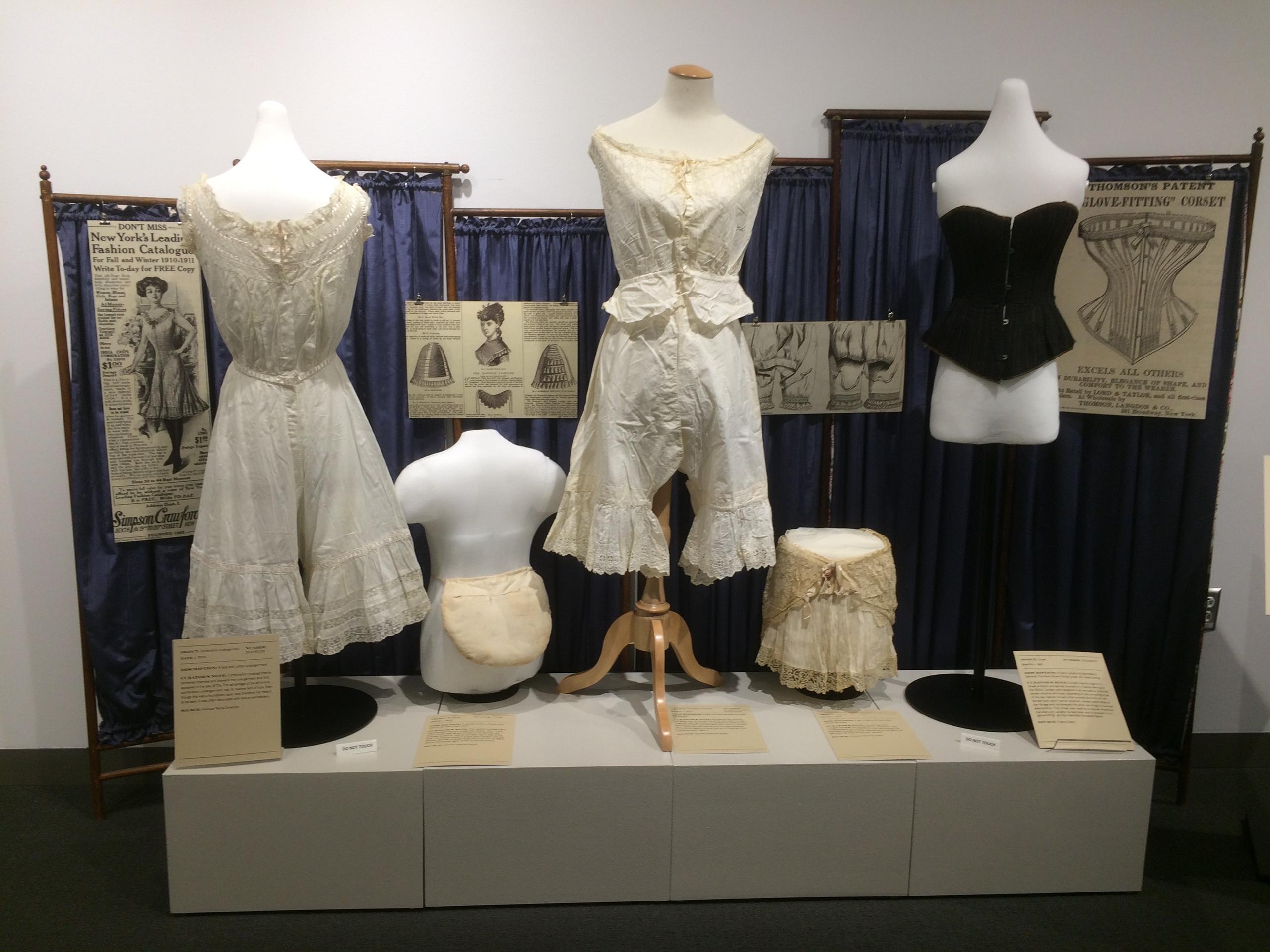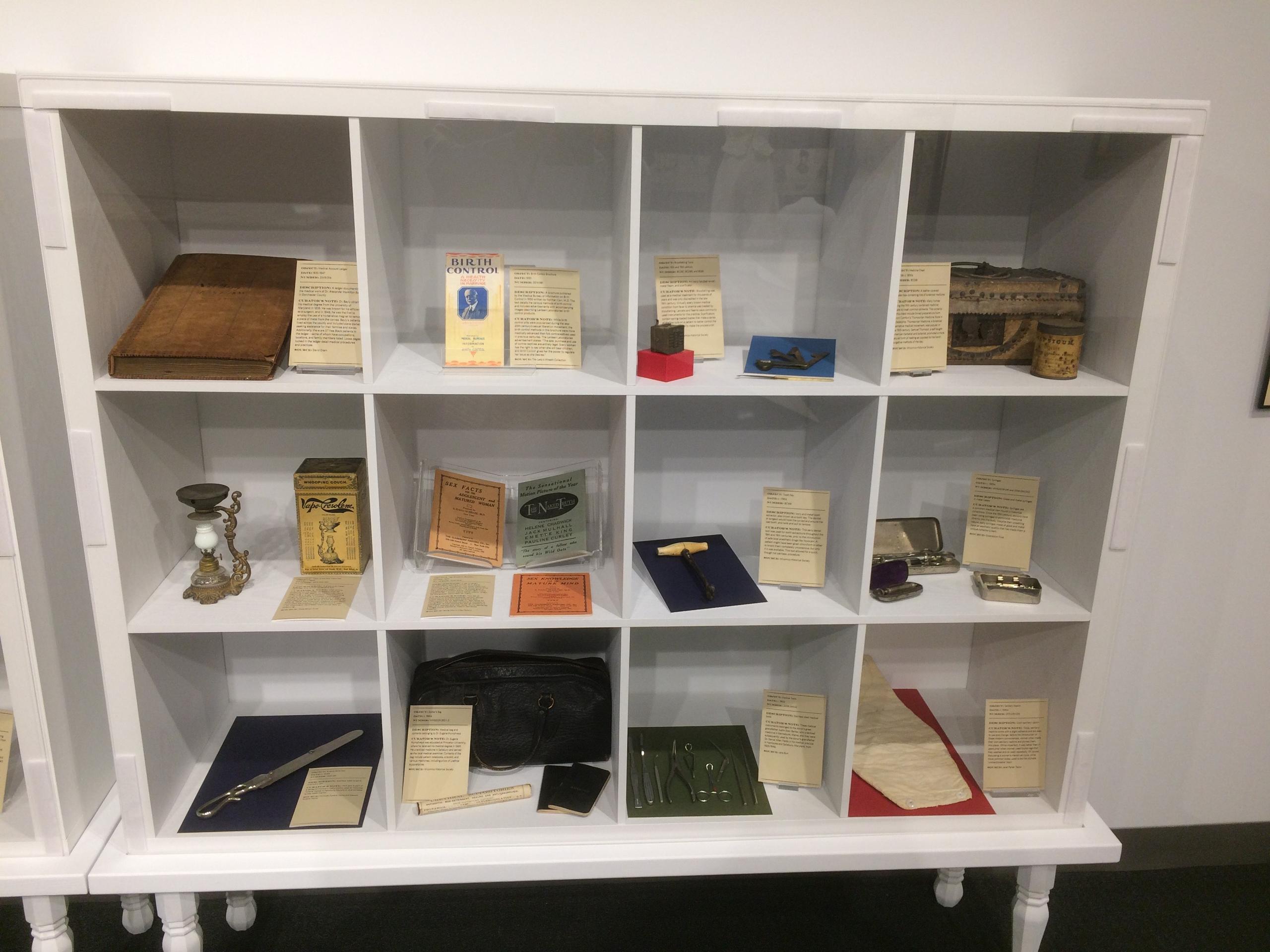
Teaching with Exhibits
 While most faculty use the SU Libraries to support their classes through assigning items from our collections or having information literacy instruction, did you know you also could take advantage of our exhibits? These can be a way to make your students think about the world around them in a different way.
While most faculty use the SU Libraries to support their classes through assigning items from our collections or having information literacy instruction, did you know you also could take advantage of our exhibits? These can be a way to make your students think about the world around them in a different way.
Lorna Morris’ History 102 and 201 classes participated in artifact and exhibit analysis at the Nabb Center using worksheets we designed/provided. Students worked in groups to complete artifact analysis worksheets on a select group of objects from the collection. They also completed an exhibit analysis worksheet on the temporary exhibit this past spring (“Voices and Votes: Democracy on Delmarva”). They wrapped up with a class discussion about material culture for research purposes, interpretation of artifacts, and analyzing artifacts with and without context. This is a good example of how faculty could incorporate exhibits fairly easily into an introductory-level class. You really don’t have to do much work with something like this. We also have had faculty offer extra credit to students for completing our exhibit/artifact analysis worksheets on their own time.
 Lauren Hill’s Honors 111 Critical Thinking and Writing and Honors 112 Issues in Humanities classes visited the Nabb Center for a tour of our temporary exhibitions. The course themes centered on storytelling and allowed students to see firsthand how artifacts can be used to tell stories. The visit was also intended to spark ideas about possible research topics and culminated in a discussion and brainstorming session of their own research interests. This is a good example of how we can tailor a visit to focus on specific aspects of a course. Hill and Melinda McPeek, the curator of exhibits and engagement, met and discussed what the emphasis/goals of the visit would be. McPeek is always happy to meet with faculty to help them design an exercise that incorporates exhibits or artifacts.
Lauren Hill’s Honors 111 Critical Thinking and Writing and Honors 112 Issues in Humanities classes visited the Nabb Center for a tour of our temporary exhibitions. The course themes centered on storytelling and allowed students to see firsthand how artifacts can be used to tell stories. The visit was also intended to spark ideas about possible research topics and culminated in a discussion and brainstorming session of their own research interests. This is a good example of how we can tailor a visit to focus on specific aspects of a course. Hill and Melinda McPeek, the curator of exhibits and engagement, met and discussed what the emphasis/goals of the visit would be. McPeek is always happy to meet with faculty to help them design an exercise that incorporates exhibits or artifacts.
You will find exhibit analysis worksheets and other educational resources on the Nabb Center’s website. Many of our previous exhibits live on in online versions. See the Events and Exhibits page for links to them.
Here are our spring exhibits:
- “Where Land and Water Meet: The Chesapeake Bay Photography of Dave Harp” on the first floor. This features lovely photographs from a legendary local photographer and is on loan from the Chesapeake Bay Maritime Museum.
- “Unmentionable: The Indiscreet Stories of Artifacts” on the fourth floor. Patterned on the traditional cabinet of curiosities that forms the foundation for many famous museums, it “explores some of the unusual, scandalous, disturbing, awful, discriminatory, uncomfortable, and surprising artifacts in the Nabb Research Center’s collection.” The topics covered include racist and sexist imagery in popular culture, death and mourning, women’s unmentionables, war, and strange medicine. The exhibit could well lend itself to being the jumping-off point for a short research paper by having students select an object or group of objects from the exhibit to explore further.
- “Delmarva: People, Place, and Time” is the Nabb Center’s permanent exhibit on the fourth floor. It is a great way to introduce students to our local culture, if they are not from the area.
For fall 2022, these are the exhibits we’re working on:
- “Salisbury’s Black History and Neighborhoods” on the first floor. The exhibit will closely follow and expand upon the themes and locations featured in the Black History Walking Tour that graduate student Allison Stancil completed last semester. We will be working in conjunction with the Chipman Center and with input from the local Black community to develop the stories.
- “Sacred and Secular: Music of the Eastern Shore” on the fourth floor. This immersive exhibit will examine secular and sacred music from the Eastern Shore and the intertwining of these musical traditions. From singing and praying bands to a country music mecca in Rising Sun, MD, the exhibit explores musicians and musical traditions unique to Delmarva.
 The spring exhibits will be open until June 5. The fall exhibits open on Friday, August 26. The first floor exhibit is available through Sunday, December 11, while the fourth floor exhibit remains up through Sunday, May 21, 2023.
The spring exhibits will be open until June 5. The fall exhibits open on Friday, August 26. The first floor exhibit is available through Sunday, December 11, while the fourth floor exhibit remains up through Sunday, May 21, 2023.